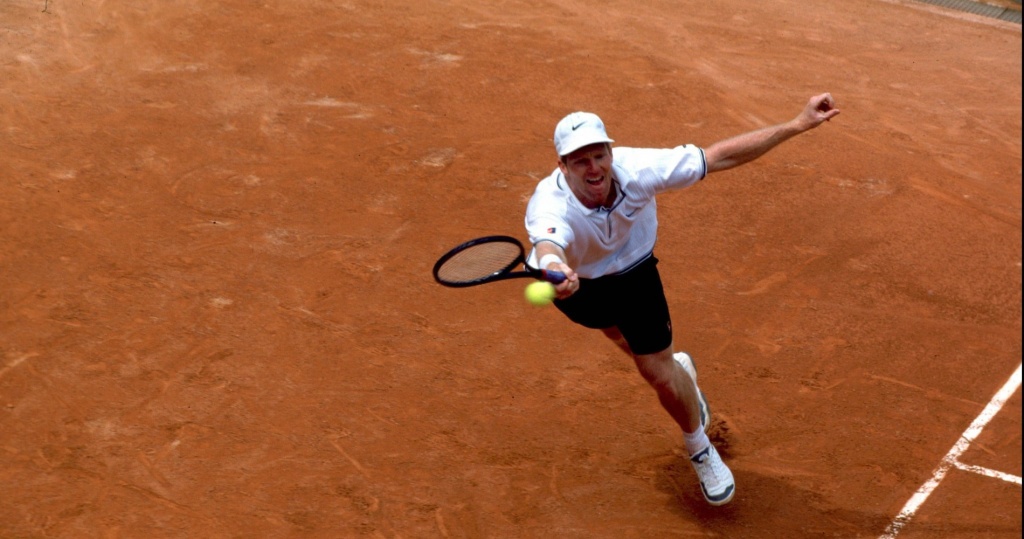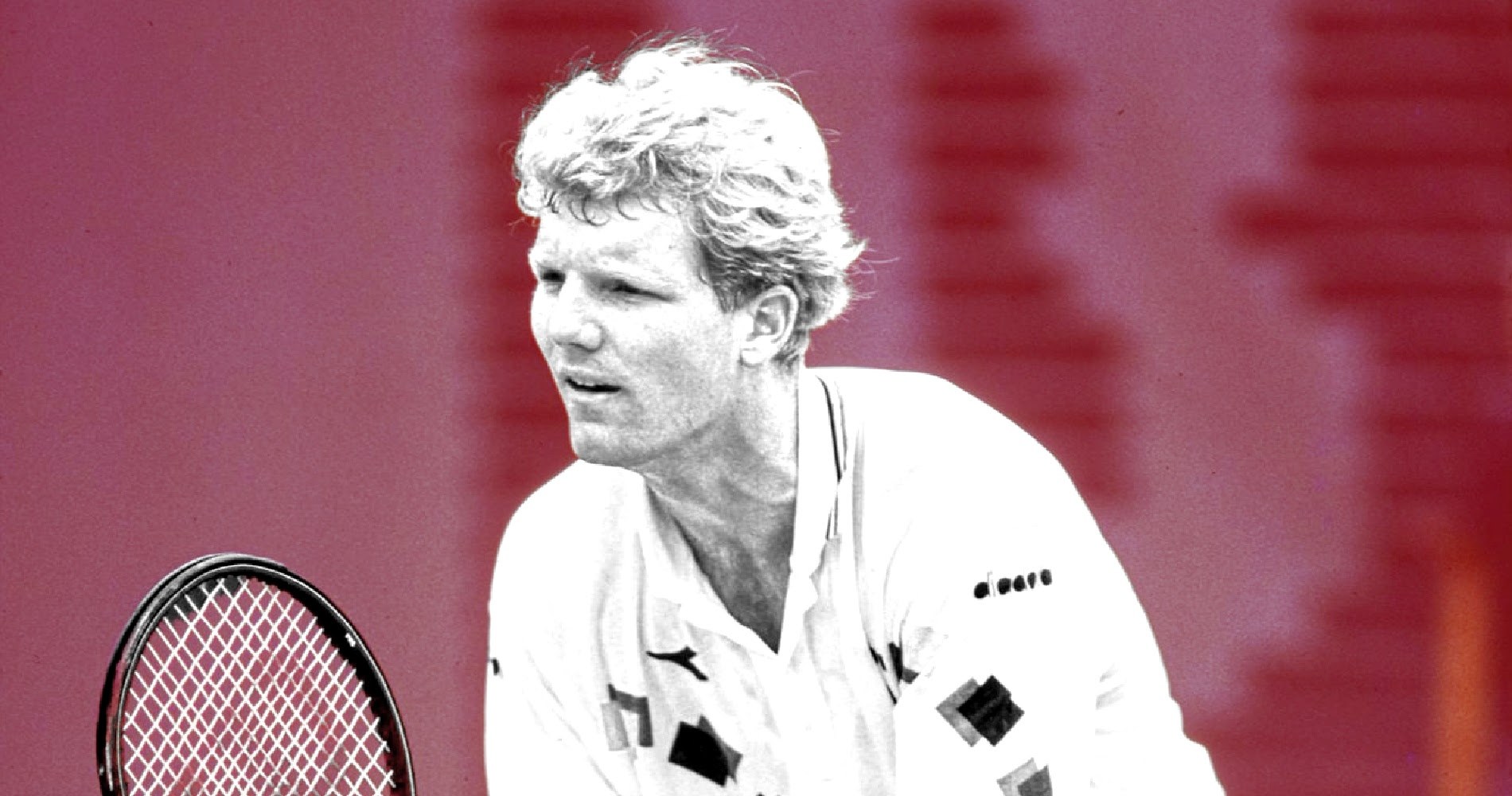February 10, 1992: The day Jim Courier became world No 1 for the first time
Every day, Tennis Majors looks back at the biggest moments in tennis history. On February 10, 1992, Jim Courier became world No 1 for the first time.
 Jim Courier / Panoramic
Jim Courier / Panoramic
What happened exactly on that day
On this day, February 10, 1992, shortly after having claimed his second Grand Slam title at the Australian Open, Jim Courier became world No 1 for the first time, overtaking Stefan Edberg, whom he had defeated in the final in Melbourne. The American would remain on top of the ATP rankings for six weeks in his first stint, but he would end up spending 58 cumulative weeks at No 1.
The player: Jim Courier, four-time major champion
Born in 1970, Jim Courier was one of many players that developed his game at the Nick Bollettieri tennis academy in the 1980s. He developed quite an unconventional game, using western grips and short backswings often compared with baseball swings, which matched his trademark cap. His big serve and his inside-out forehand were his favourite shots, and he was famous for his work ethic, commitment and fitness.
Courier was part of a young American quartet which made a big impression on the ATP Tour: Andre Agassi, who had been in the top 10 since 1988, Michael Chang, who had already triumphed at Roland-Garros as a 17-year-old, and Pete Sampras, who won the 1990 US Open as a 19-year-old. Courier claimed his maiden title in Basel, in 1989, defeating Stefan Edberg in the final (7-6, 3-6, 2-6, 6-0, 7-5), a few months after reaching the fourth round of a Grand Slam for the first time at Roland-Garros (defeated by Andrei Chesnokov, 2-6, 3-6, 7-6, 6-2, 7-5).

His breakthrough year was 1991. Starting the season as world No 25, he triumphed at both Indian Wells and Miami, a feat that had never been achieved before, but the peak of his year was his first Grand Slam title, at Roland-Garros, where he defeated Agassi in the final (3–6, 6–4, 2–6, 6–1, 6–4). A few months later, he reached the final at the US Open, where Edberg delivered an exquisite performance to beat him heavily (6-2, 6-4, 6-0), and he also finished runner-up at the Masters Cup (lost to Sampras, 3-6, 7-6, 6-3, 6-4).
Courier was now world No 2 and closing in on world No 1. He started 1992 by claiming a second Grand Slam title, defeating Edberg in the final (6-3, 3-6, 6-4, 6-2), and he was now a few points away from reaching the top of the ATP rankings.

The place: San Francisco
The Pacific Coast Championships, founded in 1889, was one of the oldest tennis tournaments in the world. Originally held in Monterey, its iconic location was Berkeley, where the event was played from 1900 until 1971. The tournament then moved to San Francisco, on indoor carpet. Amongst its former champions were great players such as Jimmy Connors (1972), Arthur Ashe (1970, 1975), John McEnroe (1978, 1979, 1982, 1984, 1986), Ivan Lendl (1983) and Stefan Edberg (1985).
The facts
In only 13 months, Jim Courier had gone a long way, from world No 25 to world No 2 and double Grand Slam champion. After his triumph at the Australian Open, he was just a few points away from becoming the new world No 1.
“I didn’t start to think too much about reaching No 1 until it was within my grasp,” he would admit to the ATP in 2017. “At the end of 1991, I knew I had a chance to get there if I had a good start to ‘92 and that was exactly what happened with a win at the Australian Open which put me on the precipice.”
The next step of Courier’s journey was San Francisco, where he knew that reaching the final would make him No 1. This put an extra pressure on his shoulders. “I was stressed out about it. I was very aware of the situation,” he later said.
In the first round, a very tight Courier escaped an early loss against world No 94, Mark Woodforde (7-6, 5-7, 7-5), and in the quarter-finals, he dropped another set to Wally Masur, world No 57 (4-6, 6-4, 6-3). He was one match away from his goal, and between him and the world No 1 seat stood Derrick Rostagno, world No 17.
“Derrick was a tricky, dangerous fast-court player,” Courier would recall, “ And I had to grind my way through that match to get to No 1. I was battling Derrick as well as the ranking and it was as much of a relief as it was a thrill to win the last point and get to the top of the rankings mountain… I remember going down to my knees, saying to myself: ‘This is it; this is the moment. They can never take it away from me.’”
Perhaps Courier felt too much relief after defeating Rostagno, as he was defeated on the following day by Michael Chang (6-3, 6-3). Nevertheless, on February 10, 1992, Courier passed Edberg and became the first American to sit at the pinnacle of his sport since John McEnroe, in 1985. However, the circumstances didn’t allow him to throw a giant party to celebrate this achievement.
”We were on Concorde, heading to the runway but we backed up, the nose wheel wouldn’t turn and so the flight was cancelled,” Courier would remember. “So I spent my first full day as the No 1 player ordering pizza, sitting in an airport lounge with strangers, with my agent and girlfriend.”
What next
Courier would claim two additional Grand Slam titles. He would manage to defend his title at the French Open in 1992, beating several future Grand Slam champions on his way (including Petr Korda in the final, 7-5, 6-2, 6-1). He would also defend his title at the Australian Open, in 1993, defeating his rival Stefan Edberg in the final (6-2, 6-1, 2-6, 7-5). In total, he would spend 58 weeks as world No 1.
The turning point in his career would happen in the middle of 1993. Reaching the final for the third time in a row at Roland-Garros, he would lose his crown to Spaniard Sergi Bruguera after an epic final (6-4, 2-6, 6-2, 3-6, 6-3). A month later, he would be defeated again in his last Grand Slam final appearance by fellow American Pete Sampras at Wimbledon (7-6, 7-6, 3-6, 6-3).
From this point on, Courier would begin a steady decline and he would struggle with his motivation. In the last five years of his career, he would only claim five of his 23 career titles. In 2000, his ranking having dropped to No 67, his motivation at its lowest, he would end his career.













